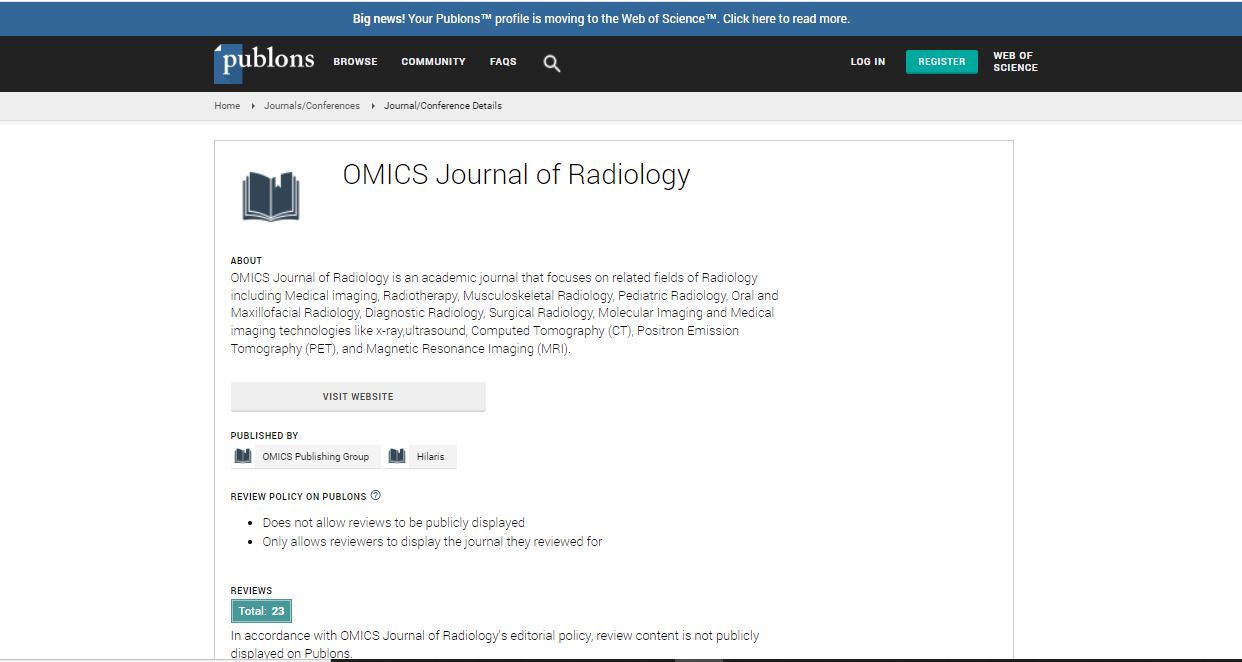Our Group organises 3000+ Global Conferenceseries Events every year across USA, Europe & Asia with support from 1000 more scientific Societies and Publishes 700+ Open Access Journals which contains over 50000 eminent personalities, reputed scientists as editorial board members.
Open Access Journals gaining more Readers and Citations
700 Journals and 15,000,000 Readers Each Journal is getting 25,000+ Readers
Google Scholar citation report
Citations : 551
Journal of Radiology received 551 citations as per Google Scholar report
Journal of Radiology peer review process verified at publons
Indexed In
- Index Copernicus
- Google Scholar
- Open J Gate
- Genamics JournalSeek
- ResearchBible
- Electronic Journals Library
- RefSeek
- Hamdard University
- EBSCO A-Z
- OCLC- WorldCat
- SWB online catalog
- Virtual Library of Biology (vifabio)
- Publons
- Geneva Foundation for Medical Education and Research
- ICMJE
Useful Links
Share This Page
The cause of coma as identified with magnetic resonance imaging
2nd International Conference on Neuroscience, Neuroimaging & Interventional Radiology
Raimund Firsching
University Clinic for Neurosurgery, Germany
Keynote: OMICS J Radiol
Abstract
Introduction: Diffuse axonal injuries have been considered the most severe form of brain injury, which causes coma. To the best of our knowledge there is no systematic study on magnetic resonance imaging (MRI) of the brain of patients in coma and acute signs of herniation. Patients & Methods: A prospective series of 157 patients in posttraumatic coma for a minimum of 24 h was analyzed. Magnetic resonance imaging of brain lesions was obtained within 10 days √ʬ?¬? median 2 days √ʬ?¬? of the injury with a 1.5 tesla magnet. Statistical analysis including contingency tables, Fisher√ʬ?¬?s exact test, cross tables and odd ratios to investigate the correlation of coma and eventually loss of pupil function and extension response with the locations of brain lesions on MRI and with outcome. Results: 63% of all patients in coma exhibited a brain stem lesion. All patients emerging from coma later one week after the injury had a brain stem lesion. Duration of coma was highly statistically related with a brainstem lesion. Patients with either unilateral loss of pupil function or extension response were statistically significantly more likely to harbor MRI lesions of the brain stem when compared with patients in coma without further neurological deficits (p=0.0004 Fisher√ʬ?¬?s test). The correlation of brainstem lesions with outcome according to the GOS after one year was highly significant (p<0.0001 Fisher√ʬ?¬?s test). Conclusion: Contrary to earlier concepts of diffuse axonal injury this is the first study giving evidence that brain stem lesions play a pivotal role after head injury. The predictive value of MRI is higher than that of any other investigation.Biography
Raimund Firsching LRCP (LOND.) MRCS (ENGL.) was born Dec. 12th 1953 born in Bochum, West Germany. 1972 beginning studies at medical school of the University of Bonn, 1979, graduation from medical school Bonn, dissertation. 1980, conjoint exam in London, Queen Square, on the register of the General Medical Council, United Kingdom. 1981 beginning neurosurgical training at the University of Cologne, 1986 research fellow at the University of Texas, Health Science Center at San Antonio, Texas, USA, division of neurosurgery, chief: Dr. Story 1987 board certified neurosurgeon at the University of Cologne, Germany, 1988 habilitation for the field of neurosurgery, admitted to the Medical Faculty of the University of Cologne. 1992-1994 Vice chairman of the Department of Neurosurgery at the Ruhruniversitaet in Bochum. 1995 until now Neurosurgeon-in-Chief and Professor at the Universitaetsklinik fuer Neurochirurgie Magdeburg. 1997 until 2013 nominated honorary judge of the state professional court of Magdeburg, capital of the state of Saxony Anhalt, Germany. 2017 congress president of the Deutsche Gesellschaft fuer Neurochirurgie at the national convention of neurosurgery in Magdeburg Married to Dr. Ibsen-Firsching, a pediatrician, since 1981, 3 children

 Spanish
Spanish  Chinese
Chinese  Russian
Russian  German
German  French
French  Japanese
Japanese  Portuguese
Portuguese  Hindi
Hindi 
